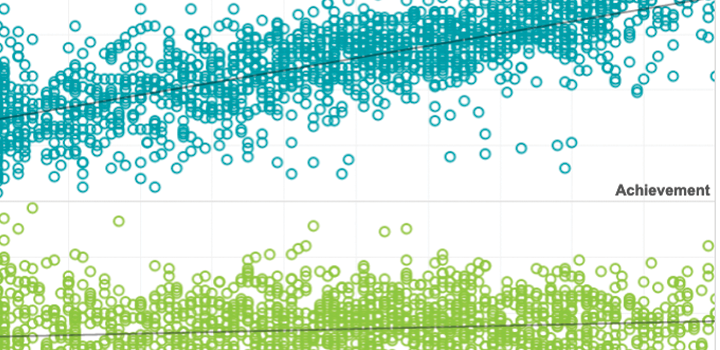Journal article
Progress monitoring measures in mathematics: a review of the literature.
2007
Foegen, A., Jiban, C. L., & Deno, S. L. (2007). Progress monitoring measures in mathematics: a review of the literature. Journal of Special Education, 41(2), 121-139.

Abstract
This article was published outside of NWEA. The full text can be found at the link above.
Topics: Measurement & scaling, Academic content, Math & STEM
Related Topics


Boys regain the advantage in middle school STEM skills: Post-COVID trends in gender achievement gaps
The research study used a robust set of data from three national assessments to examine trends in gender gaps in 8th grade STEM skills over the course of the pandemic.
By: Megan Kuhfeld, Karyn Lewis, Gustave Robinson
Products: MAP Growth
Topics: COVID-19 & schools, Equity, Growth, Math & STEM


This is the accompanying technical appendix to the research study, “Boys regain the advantage in middle school STEM skills: Post-COVID trends in gender achievement gaps,” leveraging data from three national assessments, as well as enrollment in Algebra, to examine trends in gender gaps in 8th grade STEM skills over the course of the pandemic.
By: Megan Kuhfeld, Karyn Lewis, Gustave Robinson
Products: MAP Growth
Topics: COVID-19 & schools, Equity, Growth, Math & STEM


Spanish MAP Reading Fluency content guide
This document presents the test design and specifications for Spanish MAP Reading Fluency.
By: Sara Velazquez, John Newburn, Fang Peng, Carmen Hall, Kayla McLaughlin, Teresa Krastel
Products: MAP Reading Fluency, MAP Spanish
Topics: Test design, Academic content, Assessments in Spanish


Integrating Literacy and Science: A Powerful Partnership for Student Success
This research brief explores the connection between science and literacy instruction documenting the benefits of integrated science and literacy instruction at the elementary level, and highlighting the benefits of integrating instruction while providing research-based guidance on how to effectively do this.
By: Susan Kowalski, Ayesha K. Hashim, Scott J. Peters
Topics: Growth, Equity, Informing instruction, Math & STEM


Practitioner’s Guide to Integrating Literacy and Science
This is the accompanying guide to the research brief, Integrating Literacy and Science: A Powerful Partnership for Student Success, which describes four key components of effective integration of literacy and science instruction at the elementary level. In this practitioner’s guide, we provide sample lessons to demonstrate each of these components in action in an elementary classroom.
By: Scott J. Peters, Susan Kowalski, Ayesha K. Hashim
Products: MAP Growth
Topics: Equity, Growth, Informing instruction, Math & STEM


Predicting Amira Reading Mastery Based on NWEA MAP Reading Fluency Benchmark Assessment Scores
This document presents results from a linking study conducted by NWEA in May 2024 to statistically connect the grades 1–5 English Amira Reading Mastery (ARM) scores with the Scaled-Words-Correct-Per-Minute (SWCPM) scores from the MAP Reading Fluency benchmark assessment taken during Fall and Winter 2023–2024.
By: Fang Peng, Ann Hu, Christopher Wells
Products: MAP Reading Fluency
Topics: Computer adaptive testing, Early learning, Measurement & scaling, Reading & language arts


Achievement and Growth Norms for Course-Specific MAP Growth Tests
This report documents the procedure used to produce the achievement and growth user norms for a series of the course-specific MAP® Growth™ subject tests, including Algebra 1, Geometry, Algebra 2, Integrated Math I, Integrated Math II, Integrated Math III, and Biology/Life Science. Among these tests, Integrated Math I, Integrated Math II, Integrated Math III, and Biology/Life Science were the first time to have their norms available. The remaining tests, i.e., Algebra 1, Geometry, and Algebra 2, had their norms updated including receiving more between-term growth norms by using more recent test events. Procedure for norm sample selection and a model-based approach using the multivariate true score model (Thum & He, 2019) that factors out known imprecision of scores to generate the norms are also provided in detail, along with the snapshots of the achievement and growth norms for each test.
By: Wei He
Products: MAP Growth
Topics: Measurement & scaling


